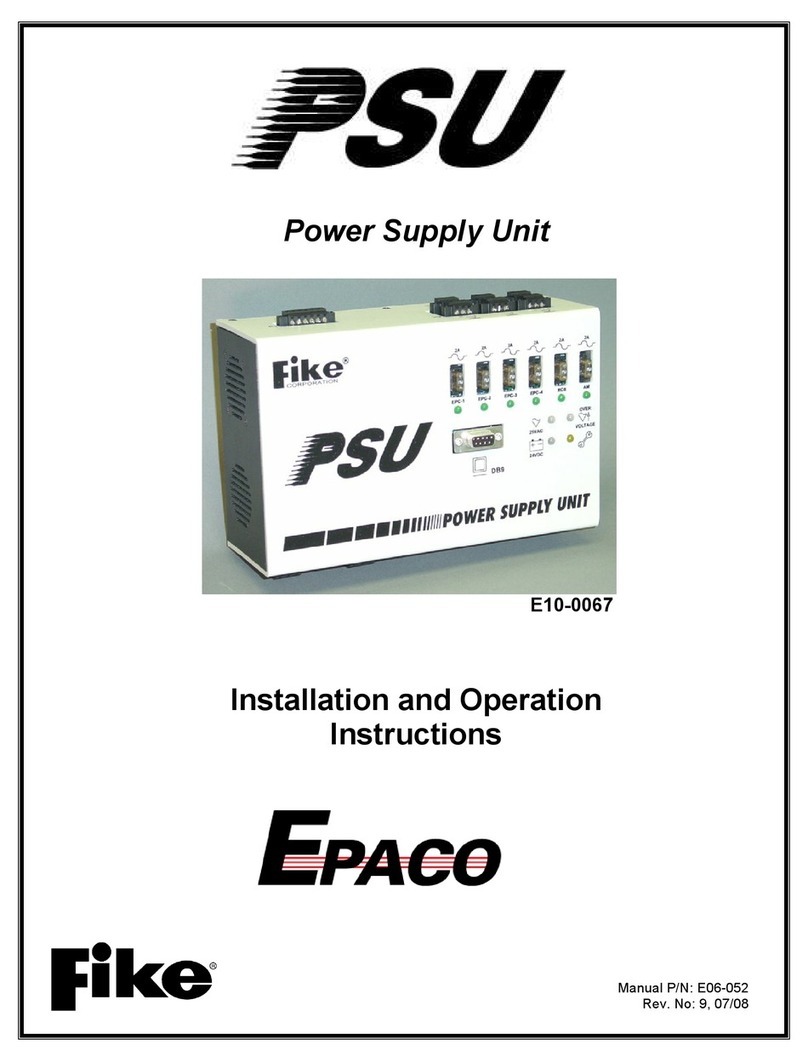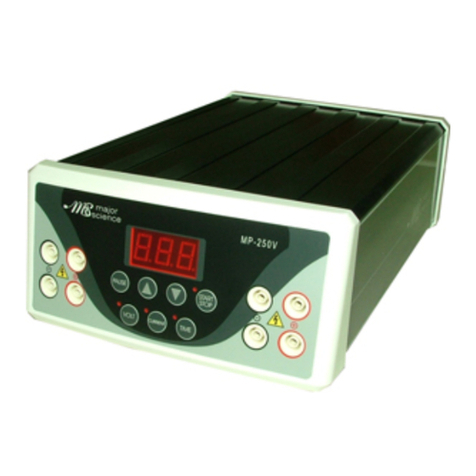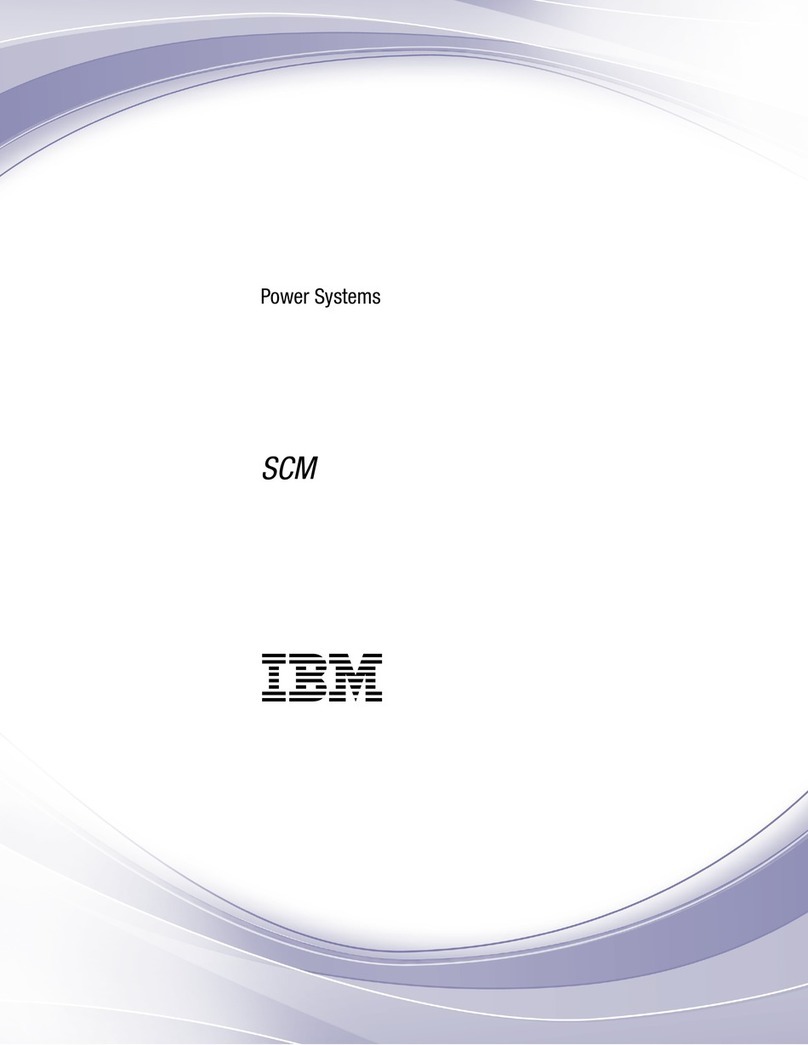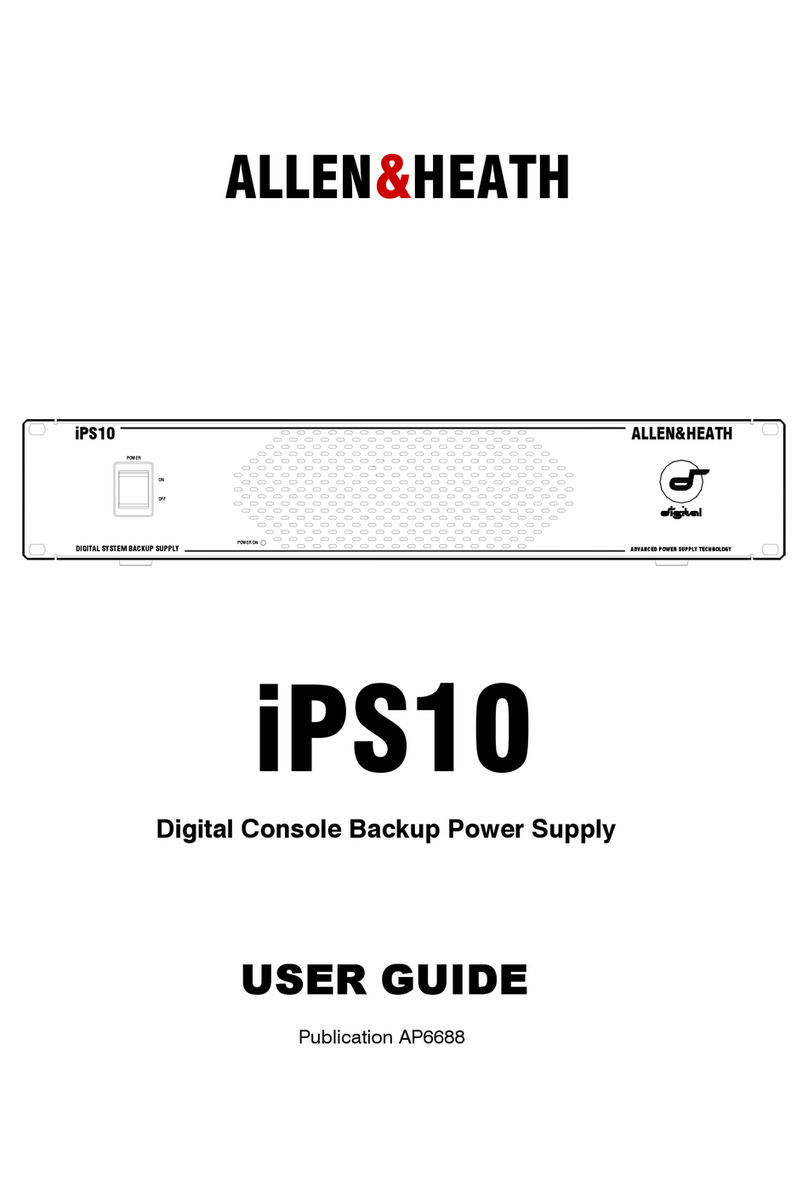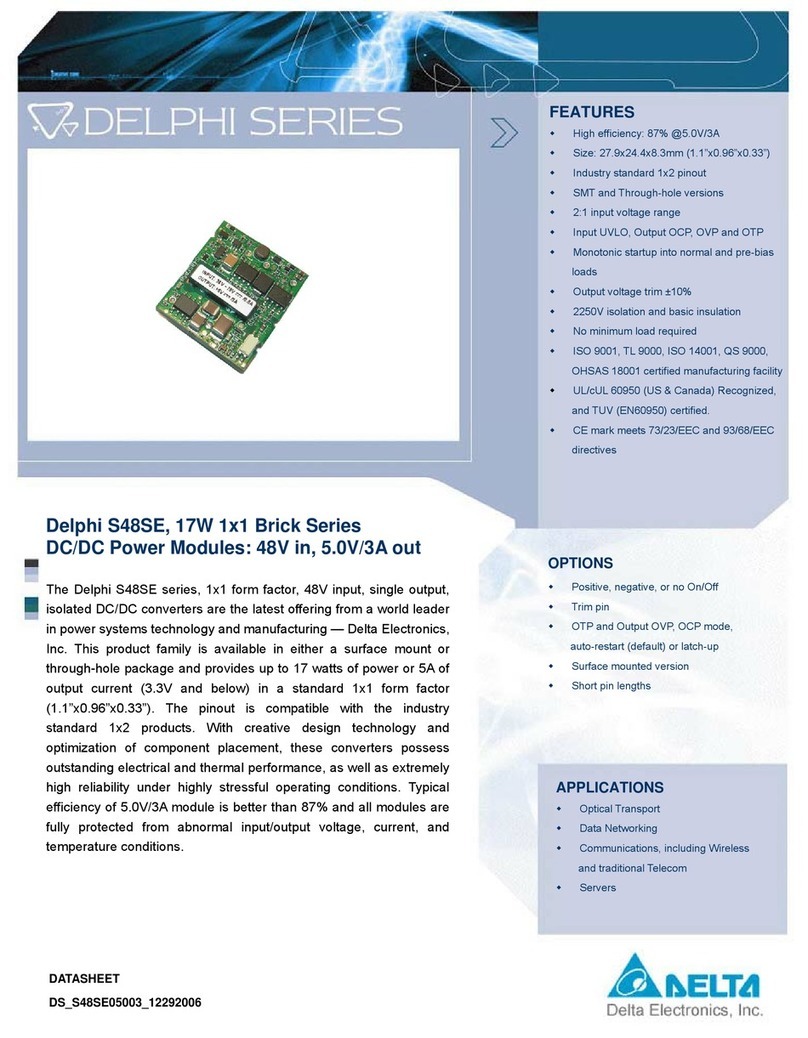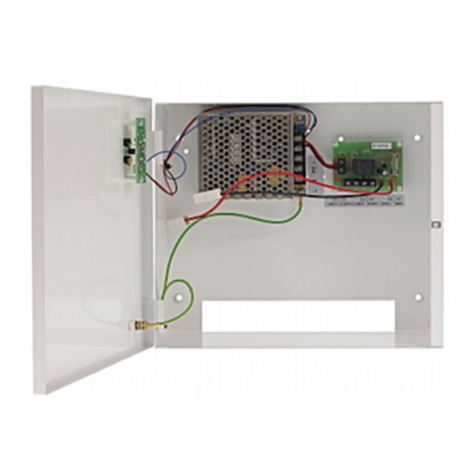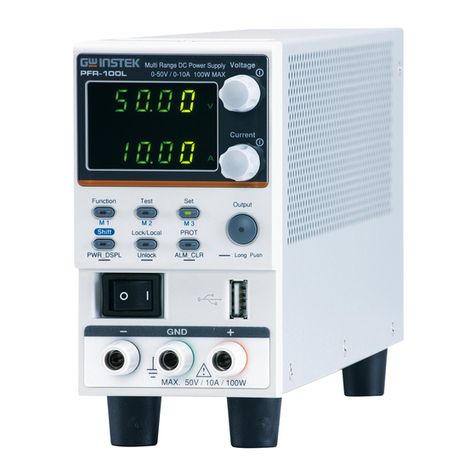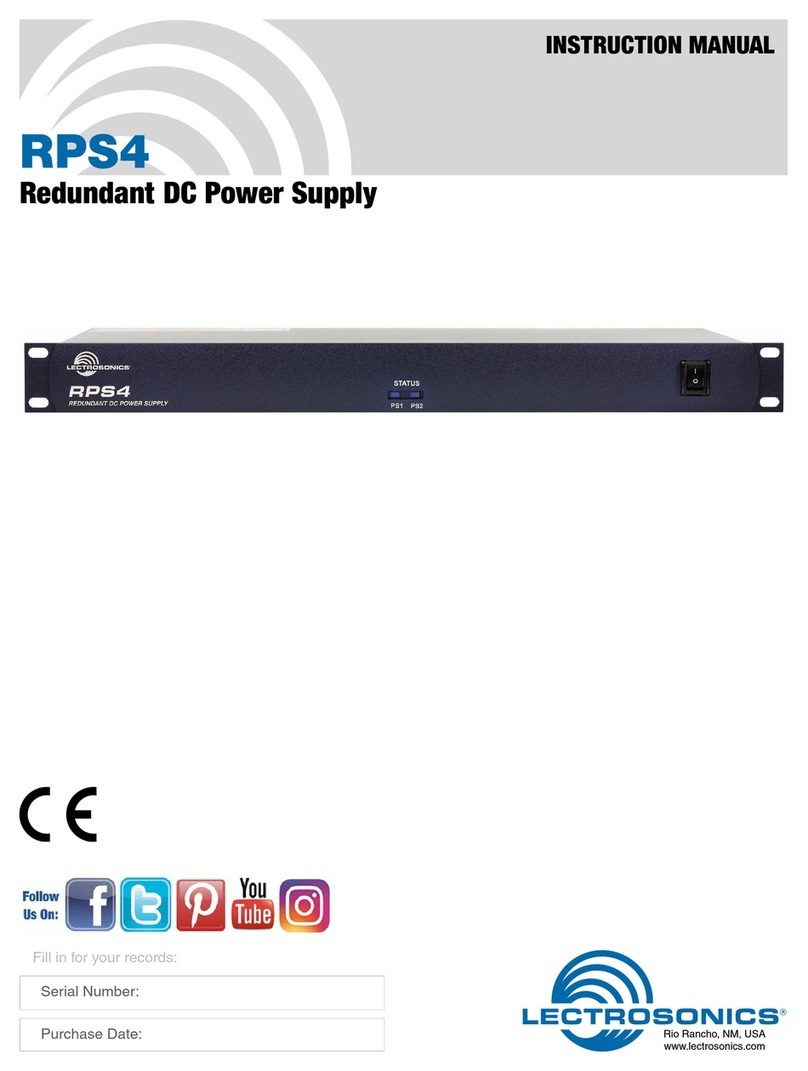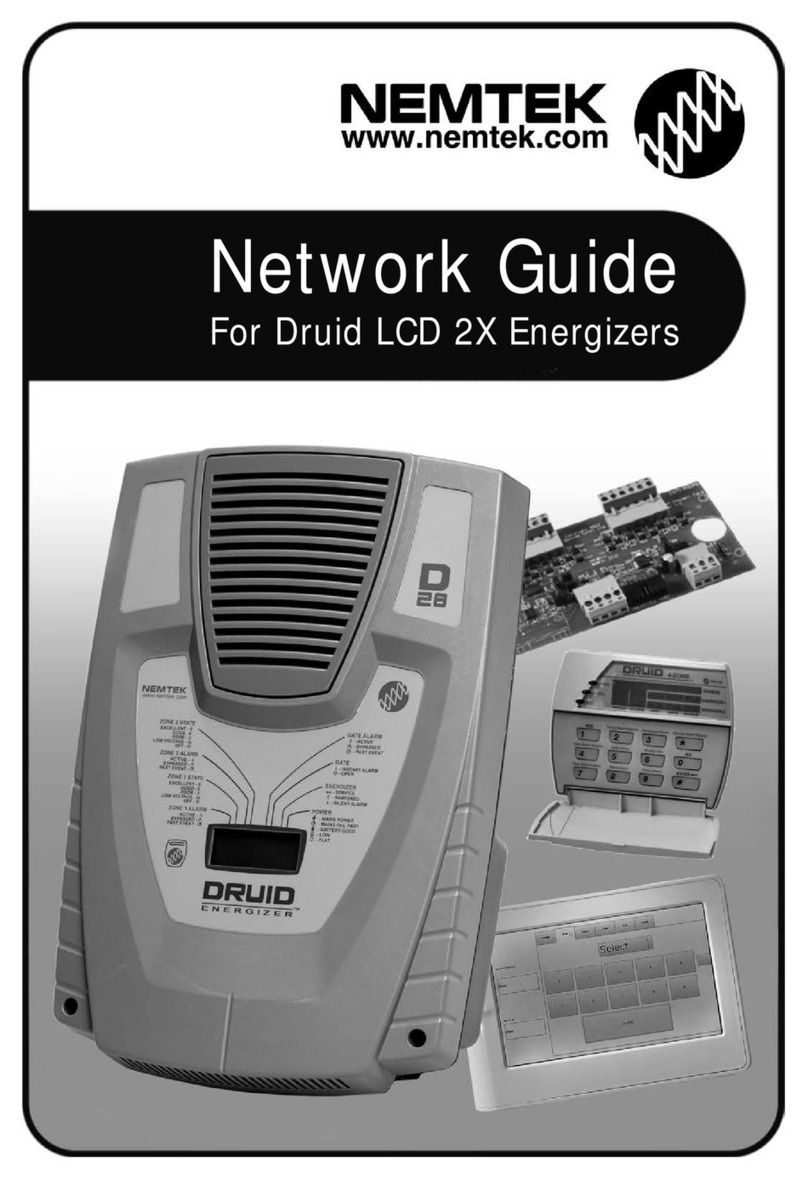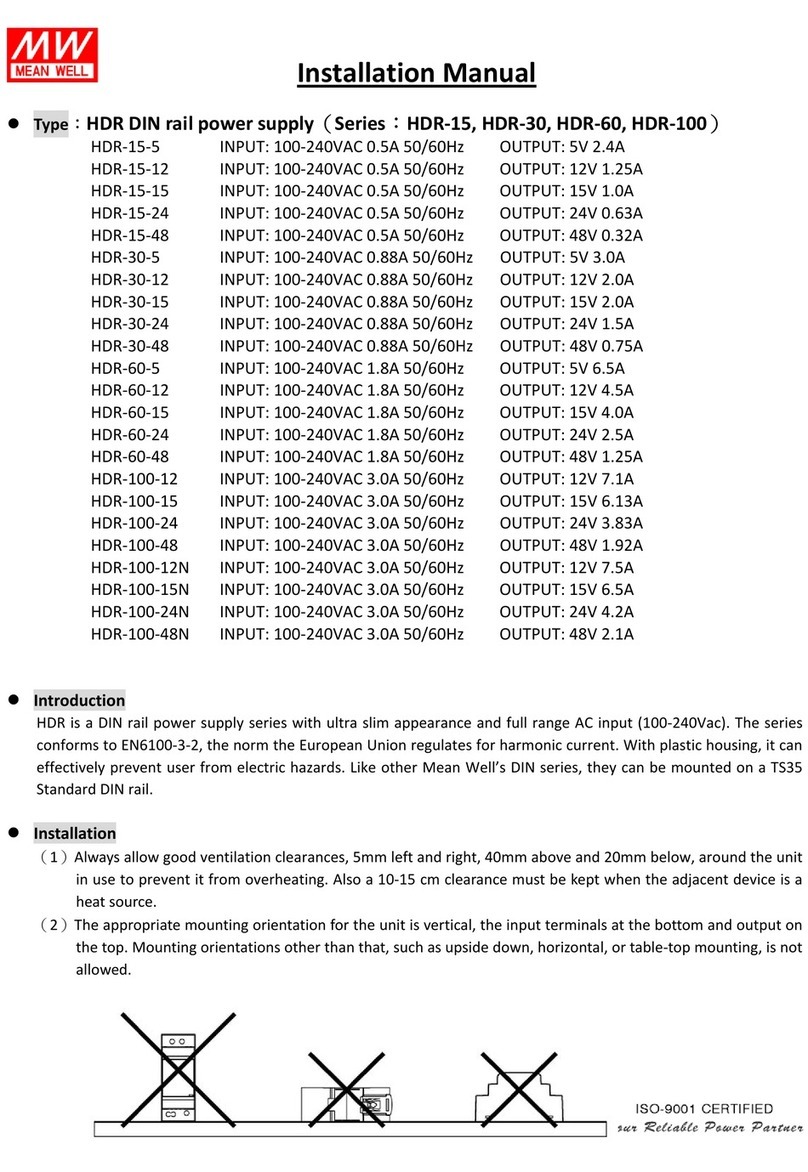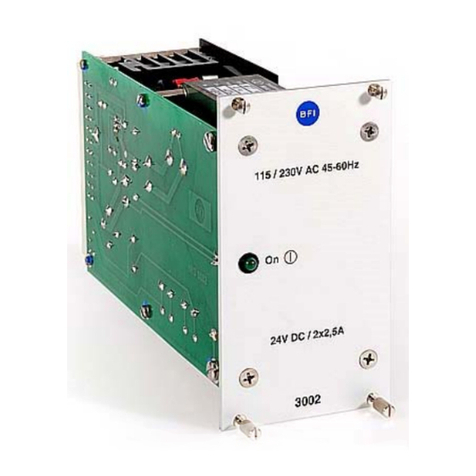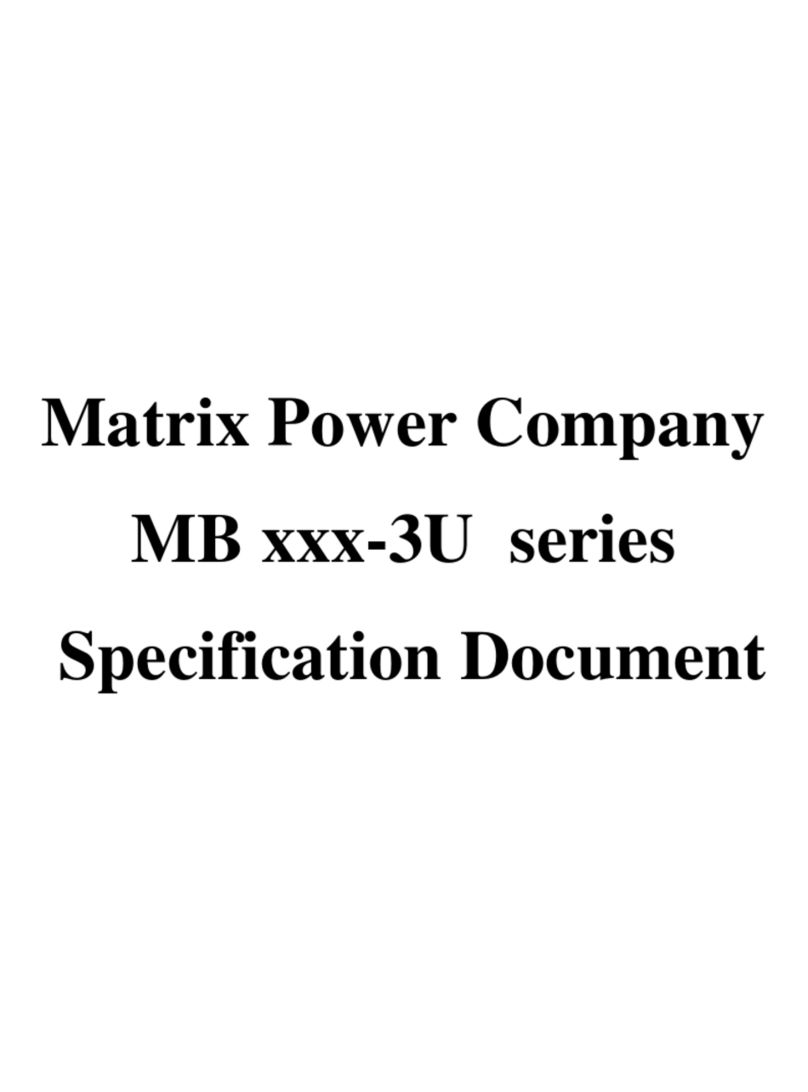Fike Quadnet PSU V3 User manual

26-0853 Issue 5
Fire Detection & Alarm System Power Supply Unit V3
Power Supply Unit Installation Manual
(TO BE RETAINED BY THE COMMISSIONING ENGINEER)

Quadnet Power Supply Unit Installation Manual
2
Fike’s policy is one of continual improvement and the right to change a specification at any time without notice is reserved. Whilst every care
has been taken to ensure that the contents of this document are correct at time of publication, Fike shall be under no liability whatsoever in
respect of such contents.
Due to the complexity and inherent importance of a life risk type system, training on this equipment is essential, and commissioning should
only be carried out by competent persons.
Fike cannot guarantee the operation of any equipment unless all documented instructions are complied with, without variation.
E&OE.
Fike equipment is protected by one or more of the following patent numbers: GB2426367, GB2370670, EP1158472, PT1035528T,
GB2346758, EP0917121, GB2329056, EP0980056, GB2325018, GB2305284, EP1174835, EP0856828, GB2327752, GB2313690

Quadnet Power Supply Unit Installation Manual
3
Contents
Introduction..........................................................................................................................4
System Design..........................................................................................................4
Equipment Guarantee ..............................................................................................4
Anti Static Handling Guidelines ................................................................................4
Warning.....................................................................................................................4
EMC ..........................................................................................................................4
The Quadnet System...........................................................................................................5
Advantages of Addressable Systems .......................................................................5
Power Supply Unit...............................................................................................................6
The General Assembly .............................................................................................6
Power Supply Disassembly.......................................................................................7
Cabinet Installation....................................................................................................7
Physical Dimensions .................................................................................................8
Power Supply Assembly............................................................................................8
Topology and Cabling ...............................................................................................9
Cable Specification ...................................................................................................9
Mains Supply & Batteries ..........................................................................................10
PSU Termination Schematic.....................................................................................11
PSU Terminals..........................................................................................................12
Address Select Links ................................................................................................15
Example Connection Diagram ..................................................................................15
Fuses ........................................................................................................................16
Commissioning....................................................................................................................17
Installation 1st Stage ................................................................................................17
Power Up ..................................................................................................................17
Good Practice ......................................................................................................................18
Battery Data .............................................................................................................18
Cable Readings.........................................................................................................18
Technical Data .....................................................................................................................19
Power Supply Unit.....................................................................................................19
Further Information .............................................................................................................20
PSU Cable Continuity & Insulation Test Results.......................................................20
Your Notes............................................................................................................................21
Important Points ..................................................................................................................24 – Back Page

Quadnet Power Supply Unit Installation Manual
4
Introduction
This Manual is intended as a guide to the engineering and commissioning principles of the Quadnet
Addressable Intelligent Fire Alarm and Detection system, and covers the Power Supply Unit only.
Due to the complexity and inherent importance of a system covering a ‘Life Protection Risk’, training on this
equipment is essential, and commissioning should only be carried out by competent and approved persons.
For further details of the availability of commissioning services contact your supplier.
System Design
This document does not cover Fire Alarm system design, and a basic understanding is
assumed.
A knowledge of BS5839: Pt 1: 2002 +A2: 2008 : Fire Detection and Alarm Systems for
Buildings is essential.
It is strongly recommended that a suitably qualified and competent person is consulted in
connection with the Fire Alarm System design and that the entire system is commissioned in
accordance with the current national standards and specifications.
Equipment Guarantee
The equipment carries no warranty unless the system is installed, commissioned and serviced
in accordance with this manual and the relevant standards by a suitably qualified and
competent person or organisation
Anti Static Handling Guidelines
Immediately prior to handling any PCBs or other static sensitive devices, it is essential to
ensure that a personal connection to earth is made with an anti-static wrist-strap or similar
apparatus.
Always handle PCBs by their sides and avoid touching any components. PCBs should also be
stored in a clean dry place, which is free from vibration, dust and excessive heat, and protected
from mechanical damage.
Warning
Do not attempt to install this equipment until you have fully read and understood this
manual.
Failure to do so may result in damage to the equipment and could invalidate the warranty.
Technical support will not be available if the instruction manual has not been read and
understood. Please have this instruction manual available whenever you call for technical
support.
For further technical support please contact your distributor. Do not call the Fike Safety
Technology support department unless your distributor has first given their advice and
attempted to rectify the issue.
EMC
This equipment when installed is subject to the EMC directive 2004/108/EC. It is also subject
to UK Statutory Instrument 2006 No. 3418.
To maintain EMC compliance this system must be installed as defined within this manual. Any
deviation from this renders the installer liable for any EMC problems that may occur either to
the equipment or to any other equipment affected by the installation.
!
!
!
!
!

Quadnet Power Supply Unit Installation Manual
5
The Quadnet System
The Quadnet system is an addressable intelligent detector system, with many advantages over traditional
addressable analogue detector systems. In order to understand the benefits let us look more closely at the
terms Fire Detector and Fire Sensor. These terms are often used interchangeably but actually have quite
different meanings. A fire detector is the device (component as defined in EN54) which automatically
detects a fire. In the majority of addressable fire detection systems, the fire devices are in fact fire sensors
which only transfer data relating to smoke and heat levels to the control panel, and the fire decision is made
by the panel.
Nearly all current addressable systems are Addressable Analogue Detector Systems where the control
panel continually scans the fire sensors, processes the returned data, and makes decisions about fires and
faults.
The Quadnet system is defined as an Addressable Intelligent Detector System, or an Addressable Fire
Detection and Alarm System with Independent Distributed Intelligence. Distributed intelligence
signifies that the signal processing is spread throughout the system, in order that the decisions about fires
and faults are taken within the detector itself. The detector is capable of being remotely programmed for
different modes of detection.
Thus the Quadnet system is indeed an analogue addressable system, but with the processing power
distributed across the entire system. This dramatically reduces the complexity of the control panel and the
data traffic, and improves the efficiency of the system.
The system addressing is carried automatically upon initialisation from the control panel, and does not need
to be programmed manually at each device.
Advantages of Addressable Systems
The nature of a microprocessor control system with individually identified devices means that the precise
location of fires and faults may be indicated, more complex actions may be implemented, system flexibility
is improved and installation and cabling costs are reduced.
In the Quadnet system, very efficient communications mean that very low quiescent power consumption
maximises the standby capacity, high power transfer capabilities allow more sounders to be connected to
the loop, and a very fast response to events is achieved as the control panel does not have to poll every
device for status data.

Quadnet Power Supply Unit Installation Manual
6
Power Supply Unit
The General Assembly
NOTE: The diagram above shows a V3 PSU. Earlier models differ slightly.
The power supply is normally supplied disassembled to make first fix easier. If the panel is already
assembled it must be disassembled in order to fix the backbox to the wall.
If the power supply needs to be disassembled in order to fix the box to the wall see “Power Supply
Disassembly”.

Quadnet Power Supply Unit Installation Manual
7
Power Supply Disassembly
Remove the collar / flange assembly complete with door as follows. Loosen the 4 screws in the keyhole
slots (2 per side). Remove the retaining screws (2) one at the top and one at the bottom. Lift off the collar /
flange assembly complete with door and set aside.
The PSU Assembly is mounted on a chassis which is fixed into the box by 1 screw through a keyhole slot at
the top of the chassis. There are two metal retainers at the bottom.
The screw must be loosened then the chassis plate can be lifted up and out of the box.
Cabinet Installation
This back box is compatible with the Quadnet range of Fire Alarm Control
Equipment and is common to the range of control panels, repeater panels and
power supply units.
Surface Mounting
At least four of the five mounting holes should be used to secure the cabinet to a
solid wall using suitable screws of at least 50mm in length. A gap of at least 50mm
should be left between this enclosure and the control panel enclosure (if mounted
adjacent).
.
Cable Entry
The cable entry locations available will depend on the type of unit that is intended, and it is important to note
which cable entry areas are suitable for each derivative.
Quadnet Power Supply Unit
The two rows of knockouts at the top are suitable.
The single row of knockouts in the rear at the top
is suitable (not the second row).
The main rear face in the top half must be kept
clear for mounting the electronics.
The main rear face and the two sides in the
bottom half, and the bottom edge, must be kept
clear for mounting the batteries.
Technical Data
Dimensions: Width x Height (excluding flange) 415mm x 415mm
Width x Height (including flange) 445mm x 445mm
Depth 75mm
Flush Mount Hole Size Backbox only 420mm x 420mm

Quadnet Power Supply Unit Installation Manual
8
Physical Dimensions
Power Supply Assembly
This is the reverse of the disassembly process above.
50mm
50mm
420mm
420mm
FLUSH MOUNT HOLE IN WALL

Quadnet Power Supply Unit Installation Manual
9
Topology & Cabling
All system wiring should be installed to comply with BS 5839: Pt 1: 2002: Amendment 2: 2008 and BS 7671
(wiring regulations) and any other standards relevant to the area or type of installation. A cable complying
with the BS 5839: Pt 1: 2002 Category 1 (cables required to operate for prolonged periods during fire
conditions) is required. This must be a 2-core 1.5mm2screened fire resistant cable (ie. MICC, FP200,
Firetuff, Firecell, Lifeline or equivalent). Ventcroft No-Burn multicore cable was utilised during the LPCB
approval testing.
If connected to the Quadnet control panel, the Power Supply Unit requires both a data connection and dual
power connections. Thus, one x 2 core 1.5 mm2screened fire resistant cable must be installed between the
PSU and the control panel for data connection, and 2 x 1.5 mm2screened fire resistant cable must be
installed between the PSU and the control panel for 24V DC power connections if each cable is no longer
than 6.3m (use 2.5 mm2for 24V DC power cables up to a maximum of 9.5m).
In order to protect against possible data corruption it is important to ensure the following points are adhered
to:
1. The data and power cables must have the screen/earth connected at the control panel and
at the Power Supply Unit using the terminals provided.
2. Do not use a 4-core cable to save the installation of two 2-core cables. It is essential that
individual 2-core cables are used.
When fitting the mains, power and signal cables to the Power Supply Unit equipment and before attaching
the connectors, slide the ferrite sleeve over the cable so that it butts up against the Power Supply Unit case.
Fit the tywrap around the cable under the ferrite sleeve to lock the ferrite into position on the cable.
Cable Specification
For DC Power and Communications between PSU and Control Panel:
Max Capacitance Core to Screen................................................... 180pF / m
Max Capacitance Core to Core....................................................... 100pF / m
Max Inductance............................................................................... 1.0mH / km
Max Resistance Two Core Screened 1.5mm²................................ 12.1Ω/ km
Fire Proof ........................................................................................ BS5839: Pt1: 2002 Category 1
Example .......................................................................................... Datwyler 8700

Quadnet Power Supply Unit Installation Manual
10
Mains Supply & Batteries
The Fire Alarm Panel 230V AC supply requires fixed wiring between 0.75 mm2and 2.5 mm2, a 3 amp fused
un-switched spur with local isolation, to be terminated into the fused terminals provided in the power supply
back box. The mains supply should be dedicated to the Fire Alarm Panel and should be clearly labelled
‘FIRE ALARM: DO NOT SWITCH OFF’ at all isolation points.
The standby will vary depending on the system loading. The PSU requires 2 x 12V 17Ah sealed lead acid
batteries. These are to be sited in the power supply back box in the provided enclosure along the bottom
edge. The batteries should be connected in series using the connection leads supplied. We recommend
the use of type Yuasa NP17-12I (FR) or other equivalent approved type.
Do not use larger or smaller capacity batteries on this system, larger batteries will not fully charge in the
time allowed and smaller ones will be overcharged and the service life will be reduced.
Using different capacity or type of batteries could also invalidate any warranty.
Note that batteries are electrically live at all times and great care should be taken to ensure that the
terminals are never presented with a short circuit. Care should be taken at all times, especially during
transit, installation and normal use.
Use caution as there is a risk of explosion if the batteries are replaced by an incorrect type.
Batteries no longer required should be disposed of in a safe and environmentally friendly manner by the
battery manufacturer or a suitable recycling service. They should never be incinerated or placed in normal
rubbish collection facilities. Dispose of used batteries according to the instructions.
Knockouts at top and rear
Field Wiring Connections
2 x 12V 17Ah sealed
lead acid batteries
12V 17AH
BATTERY
12V 17AH
BATTERY
CHARGE
CONTROLLER
SWITCHED
MODE PSU

Quadnet Power Supply Unit Installation Manual
11
PSU Termination Schematic
NOTE: The diagram above shows a V3 PSU. Earlier models differ slightly.

Quadnet Power Supply Unit Installation Manual
12
PSU Terminals
Mains Input: L, N, E
The 230V AC input is to be connected into the terminals provided on the Charge Controller Unit. This input
is protected by the 4AT live and neutral fuses adjacent to the terminals. Please use caution as double pole
live and neutral fusing is used.
Battery Connections: +24V, 0V
The battery terminals require 24V from 2 x 12V 17Ah sealed lead acid batteries, connected in series, in
order to provide secondary backup power when the primary power fails. This input is protected by the 10AT
fuse adjacent to the terminals.
Fault Relay: NO, NC, COM
The Fault relay is a single-pole change-over ‘volt-free’ relay contact. The relay contacts are rated at 30V
DC / 1A max. All inductive loads should be diode protected to prevent back EMF. However, if this is not
done, the load should be limited to 200mA to reduce the likelihood of back EMF causing damage to the
relay contacts.
The relay is de-energised in the fault condition.
Terminal Description
COM Common contact
NC Normally closed contact
NO Normally open contact
PSU OUTPUT TO CIE: SCRN, 0V, +24V, SCRN, 0V, +24V
The PSU OUTPUT connections connect the DC power from the PSU to the main control panel.
COM
NO
NC
ON BOARD PCB EXTERNAL CONNECTIONS
ON BOARD PCB EXTERNAL CONNECTIONS
TWO CABLES TO PSU INPUT
TERMINALS ON CONTROL PANEL
BACKPLANE
SCRN
OV
+24V
SCRN
SCRN
OV
+24V
SCRN
OV
OV
+24V
+ 24V
CN1
CN2

Quadnet Power Supply Unit Installation Manual
13
The PSU connections connect the Power Supply Unit to the control panel.
To comply with EN54-4, two 2-core 1.5mm2screened cables must be used for the +24V and 0V power
connections, up to a maximum of 6.3m in length. These cables should be connected at each end using the
SCRN terminals provided
If a greater distance is required between the main PSU and the main control panel, then two 2-core 2.5mm2
screened cables should be used for the +24V and 0V power connections, up to a maximum of 9.5m in
length. These cables should be connected at each end using the SCRN terminals provided.
NOTE: that if using multiple external PSUs, the quoted maximum cable lengths are the total length
from the CIE to the last PSU, not the length of each individual cable run.
Duonet control panels prior to V3 (backplane PCB Issue 3) do not have twin power connections for an
external PSU or the facility for monitoring comms with an external PSU so it is recommended that no
external PSU is used with those panels. For V3 Duonet control panels, wire as per Quadnet control panels
above.
Terminal Description
SCRN Cable screen connection
+24V Power Supply +24V connection
OV Power Supply 0V connection
PSE INPUT: SCRN, 0V, +24V, SCRN, 0V, +24V
The PSE INPUT connections connect a Secondary PSU to the main Power Supply Unit.
The Secondary PSU must be installed adjacent to the main Power Supply unit. Two 2-core 1.5mm2or 2.5
mm2 screened cables should be used for the +24V and 0V power connections. These cables should be
connected to earth at each end at the SCRN terminals provided
Terminal Description
SCRN Cable screen connection
+24V Power Supply +24V connection
OV Power Supply 0V connection
ON BOARD PCB EXTERNAL CONNECTIONS
FROM PSU OUTPUT TERMINALS (CN1
an CN2) ON SECONDARY PSU
SCRN
OV
+24V
SCRN
SCRN
OV
+24V
SCRN
OV
OV
+24V
+ 24V
CN3
CN4

Quadnet Power Supply Unit Installation Manual
14
CIE COMMS: A, B, SCRN,
The CIE COMMS connections transmit the PSU status to the main CIE panel. These cables are fault
monitored and are required for full fault monitoring of the PSU.
A 2-core 1.5mm2screened cable should be used for the Data connections (A and B), up to a maximum of
9.5m in length.
NOTE: If using multiple external PSUs, the quoted maximum cable length is the total length from
the CIE to the last PSU, not the length of each individual cable run.
Terminal Description
A Serial Data connection A
B Serial Data connection B
SCRN Cable Screen connection
PSE COMMS: A, B, SCRN,
The Secondary PSU must be installed adjacent to the main Power Supply unit. The PSE COMMS
connections transmit the status of any secondary PSUs to the main PSU. These cables are fault monitored
and are required for full fault monitoring of any secondary PSU fitted.
A 2-core 1.5mm2screened cable should be used for the Data connections (A and B).
Terminal Description
A Serial Data connection
B Serial Clock connection
SCRN Cable Screen connection
B
ON BOARD PCB EXTERNAL CONNECTIONS
TO QUADNET CIE PANEL
A
SCRN
B
A
SCRN
ON BOARD PCB FIELD CONNECTIONS
TO CIE COMMS OF SECONDARY PSU
SCRN
B
A
SCRN
B
A

Quadnet Power Supply Unit Installation Manual
15
Address Select Links
Each PSU connected to the same control panel must be given a unique address.
Addresses are set using the address select links on the Quadnet PSU Charge Controller Unit, fitting link
jumpers in the appropriate positions as follows:
ADDRESS 0 1 2 3 4
LINK JUMPERS
For normal Quadnet systems where only one PSU is used with the panel, the PSU’s address must
be set to 0 or 1.
If connecting secondary PSUs to the Quadnet system the main PSU should be address 1 and up to 3
more PSUs may be connected (addressed in sequence).
Note that if the Quadnet PSU is used as an additional external PSU for a Duonet control panel, the
internal PSU within Duonet already has address 1. Therefore the external PSU addresses should
start at 2 and continue in sequence up to address 4.
Example Connection Diagram

Quadnet Power Supply Unit Installation Manual
16
Fuses
The following fuses are located on the Charge Controller Unit.
Fuse No Label Fuse Type Breaking
Capacity
Max Rated
Voltage
FUSE1 Input from SMPS 10A T Glass 100A 250VAC
FUSE2 Battery 10A T Glass 100A 250VAC
FUSE3 Mains Input: Live 4A T Ceramic 1500A 250VAC
FUSE4 Mains Input: Neutral 4A T Ceramic 1500A 250VAC

Quadnet Power Supply Unit Installation Manual
17
Commissioning
Installation 1st Stage
The Power Supply Unit back box should be mounted, with the mains supply tested, connected and isolated
at the un-switched fused spur, ready for the commissioning engineer.
The installer needs to provide a set of As-Wired drawings and proof of cable continuity and insulation
test readings etc., to enable commissioning to proceed. This information is essential for commissioning
and programming to proceed, and may be entered onto the forms provided at the rear of the manual.
Power Up
It is generally advisable that this Power Supply Unit should be powered up by making the 230V AC mains
connection before the batteries are connected.

Quadnet Power Supply Unit Installation Manual
18
Good Practice
The following suggestions are good practice if carried out during commissioning, and may help avoid
common problems at a later date. The Fike Technical Support department may be unable to assist if the
information is unavailable, and the guidelines not followed.
Battery Data
Make a clear note by labelling of the batteries of the installation date and the battery voltage. The battery
voltage should be taken for each battery with the 230V AC mains supply removed, and the system in the
quiescent state. The voltage should also be noted on the label of each battery as a part of the system
servicing.
Cable Readings
Make a clear note in the Power Supply Unit of the cable continuity and insulation resistance readings,
including those for the screen and mains earth.

Quadnet Power Supply Unit Installation Manual
19
Technical Data
Power Supply Unit
Quadnet Power Supply Equipment
Dimensions W x H x D 445mm x 445mm x 110mm
Power Supply Standby batteries
Mains supply
Vmax
Vmin
Ri max
I min
I max a
Battery Charging
Voltage/Current Details
Ripple and noise
2 x 17Ah 12V sealed lead acid batteries
230V AC nominal
31V
19V
0.5R (max internal resistance)
350mA (min output current)
5.5A (max output current)
27.3V @ 21oC, temperature compensated
-5o/+40oC, max charge current 1.7A
<= 5% of Vmax
Outputs Relay Outputs x 1
Volt free contact SPCO Fault Output
30V DC @ 1.0A max
Note: Refer to the relevant sections in the manual for full details of output ratings

Quadnet Power Supply Unit Installation Manual
20
Further Information
PSU Cable Continuity & Insulation Test Results
After installation of the cable, and termination into all the relevant back-boxes, take cable continuity and
insulation readings. Make sure that all the cables are dressed smoothly and neatly into their back-boxes in
order that they will not be disturbed after the readings are taken.
The commissioning engineer will require these readings, along with correctly marked ‘as-wired’ drawings
and completed configuration sheets, before attending site to commission the system.
CORE CONTINUITY READING (OHMS)
PSU Data Power 1 Power 2
+ve to -ve with temp
short circuit applied
-ve to Earth with temp
short circuit applied
+ve to Earth with temp
short circuit applied
A reading of approximately 1 ohm per 100 metres of 1.5 mm2cable is expected and any significant
variation from this should be investigated. If the above readings are satisfactorily showing circuit continuity
then you may also take the reading below.
CORE INSULATION READING (OHMS)
PSU Data Power 1 Power 2
+ve to -ve
+ve to Screen
-ve to Screen
Screen to Mains Earth
A reading in excess of 1 M ohm is expected and any significant variation from this should be investigated. If
the readings are satisfactory then the loop wiring is largely proven other than for faults such as complete
polarity reversal.
Site Name & Address:
Installation Company:
Testing Engineer:
Signature:
Date:
Table of contents
Other Fike Power Supply manuals
